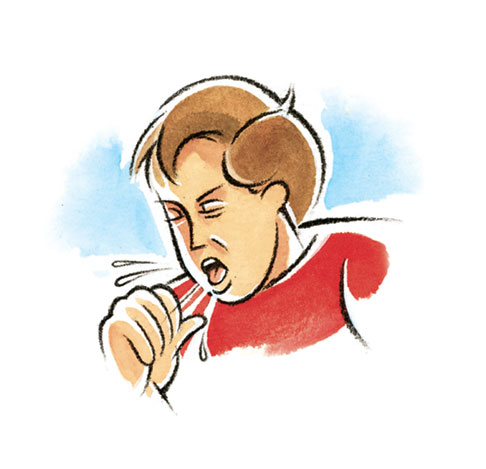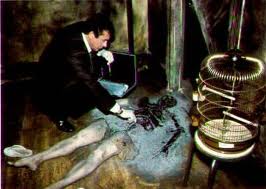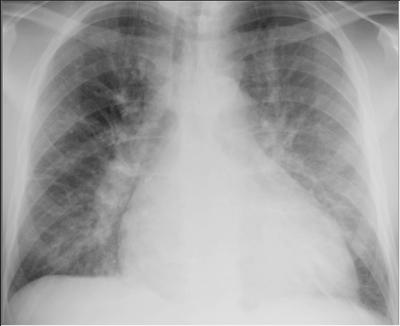HIV-TB Co-infection : A ticking Time bomb

The Association: What we know
Tuberculosis (TB) is strongly associated with HIV infection and vice versa.
HIV increases the risk of disease reactivation in people with latent TB. HIV is the most powerful risk factor for progression of TB infection to TB disease. The risk of developing tuberculosis in people living with HIV/AIDS (PLWHA) is found to be atleast 20 times greater than HIV negative individuals. HIV- infected persons who become newly infected with M. tuberculosis rapidly progress to active TB. As per a recent WHO publication, TB is the most common opportunistic infection and has been estimated to cause more than a quarter of deaths among PLWHA.
At the same time, TB can accelerate the progression of HIV. Studies have reported a six-to seven-fold increase in the HIV viral load in TB patients. TB, if untreated, thus shortens the survival of patients with HIV infection.
Pathogenesis
The hallmark of HIV infection is a progressive depletion and dysfunction of CD4+ T lymphocytes, coupled with defects in the macrophage and monocyte function. Because CD4+ T lymphocytes and macrophages have a central role in anti-mycobacterial defenses, dysfunction of these cells places PLWHA at high risk for primary or reactivation TB. At the same time, M. tuberculosis has also been demonstrated to increase HIV replication. This probably occurs through antigen specific activation and infection of the corresponding T cells. Mycobacteria, by themselves are also reported to help in destruction of CD4 cells and release of new virions from HIV infected macrophages. Mycobacteria may cause release of Tumour Necrosis Factor, further stimulating the multiplication of the virus.
Clinical spectrum of HIV/TB coinfection
TB may be acquired either before or after HIV infection. TB acquired before HIV is seen mostly in developing countries with high prevalence of TB. The presentation of disease is in the form of primary infection, sputum positivity and tuberculin test positivity. TB that follows HIV infection is seen more commonly in developed countries and in perinatally infected children. Patients in the latter group usually present with sputum negativity and tuberculin test negativity.
Pulmonary tuberculosis is the most common manifestation of tuberculosis. However the percentage of PLWHA having extrapulmonary manifestations is much higher than their HIV negative counterparts.
Tuberculosis can occur at any point in the course of progression of HIV infection. If TB occurs in the early stages of HIV infection when immunity is only partially compromised, the clinical features are more like typical tuberculosis, commonly with upper lobe cavitation, and the disease resembles that seen in pre-HIV era. As immunodeficiency advances, it often changes the clinical manifestations of tuberculosis. Advanced HIV patients often present with atypical pulmonary disease or extra-pulmonary and disseminated disease.
Infections with Non tuberculous mycobacteria (NTM) have been reported more frequently in PLWHA. Disseminated NTM disease is amongst the most common and severe infections in individuals with advanced HIV infection. An overwhelming majority (90%) of these infections are caused by Mycobactrium avium complex. Other species that have been described as a cause of pulmonary or disseminated NTM disease in AIDS include M. kansasii, M. scrofulaceum, M. gordonae, M. haemophilum, M. genavense, M. celatum, M. conspicuum, M. xenopi, M. fortuitum, M. marinum, M. malmoense and M. simiae. Accurate differentiation between the classical agent of TB, i.e M. tuberculosis , and NTM is of utmost importance. This is because NTM are inherently resistant to conventional anti-tuberculosis drugs, hence often misdiagnosed as multidrug-resistant tuberculosis.
Diagnosing TB in HIV infected individuals
TB diagnosis in PLWHA poses both a clinical as well as a laboratory challenge. It is therefore apt to use available diagnostic modalities in combinations or as algorithms to maximize diagnostic accuracy.
Pulmonary TB
All HIV infected individuals should be regularly screened for TB using the clinical algorithm with the four symptoms: current cough, night sweats, fever or weight loss. Similarly, children living with HIV who have one of the following symptoms—poor weight gain, fever, current cough, or a history of contact with a person who has infectious tuberculosis should be evaluated for tuberculosis and other conditions.
In cases with suspected pulmonary tuberculosis, acceptable methods for bacteriologic testing of sputum include sputum smear microscopy (both conventional and fluorescent), culture, commercial line probe assay (LPA), or Cartridge-Based Nucleic-acid Amplification Test (CB NAAT).
Recent consensus for smear microscopy accepts that testing of 2 consecutive sputum specimens is almost as good as 3 specimens. Also a morning sample is better than a spot sample for detection of mycobacteria. PLWHA with pulmonary tuberculosis have a lower likelihood of having acid-fast bacilli detected by sputum smear microscopy, due to the paucibacillary nature of disease. Also, HIV-TB co-infected patients form poor lung granulomas/cavities, resulting in lower concentrations of MTB in the lung lesions and can result in normal chest X-ray findings.
Hence, of all the diagnostic tests, the Xpert MTB/RIF (a cartridge based automated system helps in simultaneous detection of MTB and determination of Rifampicin resistance), commonly known as the GeneXpert test or CB-NAAT is recommended as the initial diagnostic test in individuals suspected of having or HIV-associated TB. Studies from Africa which have a higher burden of HIV-TB patients, have successfully demonstrated better diagnostic utility of Xpert MTB/RIF for alternative specimens like urine (53%) and blood (21%) in sputum negative/scarce patients, thereby aiding rapid diagnosis of TB (and MDR-TB).
Worldwide studies on PLWHA indicate that the GeneXpert test has a pooled sensitivity of 61% for smear-negative culture-positive TB and 97% for smear-positive culture-positive TB in the particular patient category.
Extrapulmonary TB
Extra-pulmonary TB is comparatively common in PLWHA (approximately 30% of cases) and poses an even greater diagnostic challenge due to the non-specificity of symptoms and low yield of mycobacteria.
For patients with presumptive extra-pulmonary TB, specimens must be carefully collected from the presumed sites of involvement. Recommended diagnostic tests include microscopy, culture, histopathology examination & Validated commercial Nucleic acid amplification tests (NAAT). Microscopy has limited utility. Xpert MTB/RIF has been extensively evaluated for diagnosing extrapulmonary TB. Although Xpert MTB/RIF is less sensitive on extrapulmonary specimens as compared to its sensitivity on sputum, the test nevertheless performs well and helps in rapid diagnosis. WHO has recommended Xpert MTB/RIF as the preferred initial microbiology test for CSF specimens for rapid diagnosis of tuberculous meningitis.
Diagnosing HIV infection in active TB cases
Keeping the close association in mind, all TB patients must be encouraged to have HIV ruled out through voluntary counselling and testing. India is considered a low HIV endemic area with high rates of TB, and the countrywide average HIV prevalence in TB patients is around 5%. Early detection of HIV offers the opportunity for potentially life-saving additional interventions.
Current WHO recommendations on treating HIV/TB co-infection
Active TB
Treating TB is the first priority in HIV-TB coinfection. In the setting of advanced HIV infection, untreated tuberculosis can progress rapidly to death in patients with advanced HIV infection. Therefore, all patients with tuberculosis and HIV infection should receive antiretroviral therapy as early as possible regardless of CD4 counts.
The treatment regimens are largely the same for HIV-infected and non-HIV-infected patients; however, the results are better if rifampicin is used throughout and treatment is given daily at least in the intensive phase. Outcome of TB treatment is generally the same in both groups with the notable exception that death rates are greater among patients with HIV infection, presumably due in large part to complications of HIV infection.
In patients with profound immunosuppression (CD4 counts less than 50 cells/mm3), antiretroviral therapy (ART) should be initiated within 2 weeks of beginning anti-tuberculosis therapy (ATT). For all other patients with HIV and tuberculosis, regardless of CD4 counts, ART should be initiated within 8 weeks of beginning ATT. Caution should be given for early initiation of ART in HIV-positive patients with tuberculous meningitis because of its association with higher rate of adverse events,as compared with initiation of ART 8 weeks after ATT initiation.
Rifampicin reduces drug levels of both non-nucleoside reverse transcriptase inhibitors (NNRTI) and protease inhibitors. Therefore, Efavirenz should be used as the preferred NNRTI since its interactions with antituberculosis drugs are minimal. In HIV-positive tuberculosis patients who need an ART regimen containing a boosted protease inhibitor (PI), it is recommended to use a rifabutin-based regimen.
Patients should also be closely monitored to identify adverse drug reactions and to observe for immune reconstitution inflammatory syndrome
Latent TB
Isoniazid prophylaxis (IPT) may be offered to PLHIV who are known to have latent tuberculosis infection or who have been in contact with an infectious TB case. Current WHO guidelines recommend treatment with Isoniazid for at least 6 months. The combined use of ART and IPT has shown to reduce TB incidence among PLHIV by up to 97% particularly among persons with latent TB. However, Isoniazid prophylaxis still remains a topic of debate due to concerns of creating drug resistance if active tuberculosis is not correctly excluded.
Cotrimoxazole prophylaxis therapy (CPT)
Co-trimoxazole targets a range of gram-positive and gram-negative organisms, fungi, and protozoa. CPT reduces morbidity and mortality in HIV-infected TB patients and must be initiated.
Article By
Dr. Vidya Nerurkar (MD),
Head – Microbiology, EIA and Serology
SRL Ltd, Mumbai.
Dr. Viral Vadwai (P.hd)
Research Scientist,
SRL R&D, Mumbai.
References
National AIDS Control Organization, Ministry of Health and Family welfare; Guidelines for management of TB in HIV infected; 2002
Mohanty K, Bendre S; Changing trends in the management of HIV & tuberculosis; Ind. J. Tub; 1995;42-117
Training Manual on Intensified TB/HIV package for Medical Officers. NACO & CTD 2009
International Strandards for Tuberculosis Care, 3rd edition, 2014, Available at http://www.who.int/tb/publications.
Systematic screening for active tuberculosis: Principles and recommendations. WHO 2013. WHO/HTM/TB/2013.04.
Automated real-time nucleic acid amplification technology for rapid and simultaneous detection of tuberculosis and rifampicin resistance: Xpert MTB/RIF assay for the diagnosis of pulmonary and extrapulmonary TB in adults and children: Policy update WHO 2014.
JG, Theron G, Muchinga TE, Govender U, Dheda K (2012) The Diagnostic Accuracy of Urine-Based Xpert MTB/RIF in HIV-Infected Hospitalized Patients Who Are Smear-Negative or putum Scarce. PLoS ONE 7(7): e39966. doi:10.1371/journal.pone.0039966.
Feasey NA, Banada PP, Howson W, Sloan DJ, Mdolo A, Boehme C, Chipungu GA, Allain TJ, Heyderman RS, Corbett EL, Alland D..Evaluation of Xpert MTB/RIF for Detection of Tuberculosis from Blood Samples of HIV-Infected Adults Confirms Mycobacterium tuberculosis Bacteremia as an Indicator of Poor Prognosis. J Clin Microbiol. 2013;51(7):2311–2316.






